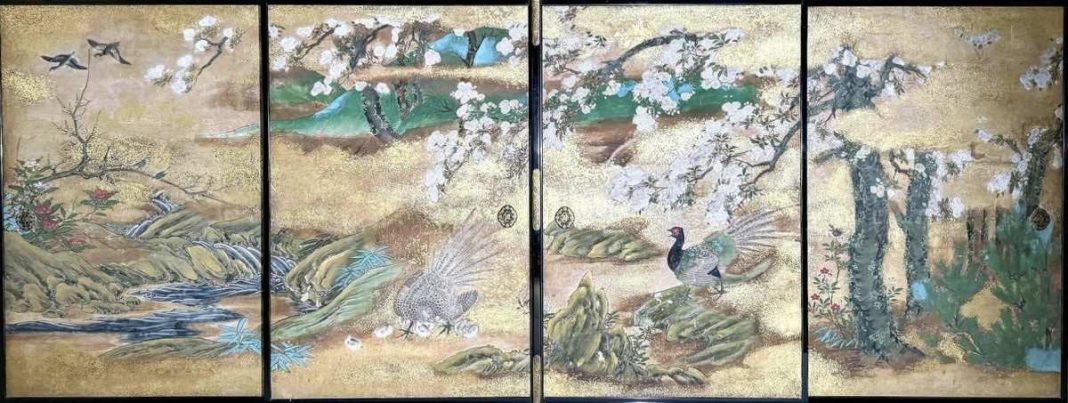Two sets of fusuma sliding panel paintings created more than 400 years ago — one owned by a long-established family in Aomori Prefecture and the other housed in London’s British Museum — are in fact counterparts, according to an announcement Tuesday by the board of education in the prefectural town of Nakadomari.
Both sets are thought to have been painted by an artist of the Kano school in the early 17th century. Art experts have high expectations that many unknowns surrounding the paintings, including the history of their travels, will be clarified.
According to the board of education and other authorities, the fusuma paintings owned by the Miyakoshi family in Nakadomari had been on display in an annex built by the family’s ninth-generation head during the Taisho era (1912-26). The four paintings depict flowers and birds on the front and human figures and landscapes on the back.
Originally, the fusuma panels were held by a Shinto shrine in Nara Prefecture. After the Meiji Restoration in 1868, the panels were put on sale amid the confusion of the times, and the Miyakoshi family is said to have purchased their set in the Taisho era.
Yoshiya Yamashita, a former chief researcher of the Kyoto National Museum, happened to see the panels last year and thought he had seen similar paintings elsewhere. Then he recalled that the artistic style resembled those of flower and bird paintings on a set of fusuma panels owned by the British Museum, which he saw in 1987 when they were exhibited at the Tokyo National Museum.
Studies of both sets of paintings revealed that the right end of the set in the British Museum runs on into the left end of the set at the Miyakoshi family house. Both sets of panels also have the same type of door pulls. The paintings at the British Museum depict motifs from autumn and winter, whereas the paintings in Nakadomari show those from spring and summer. Combined, the two sets represent the four seasons.
The studies also found a connection between the fusuma painting at the Miyakoshi family house and another owned by the Seattle Art Museum in the United States.
“I think it’s great that fusuma paintings are traveling around the world and are receiving love wherever they go,” Yamashita said at a press conference.
Rosina Buckland, curator of the Japanese collection at the British Museum, has issued a statement saying that the discovery will shed a new light on the artist who created the paintings.


